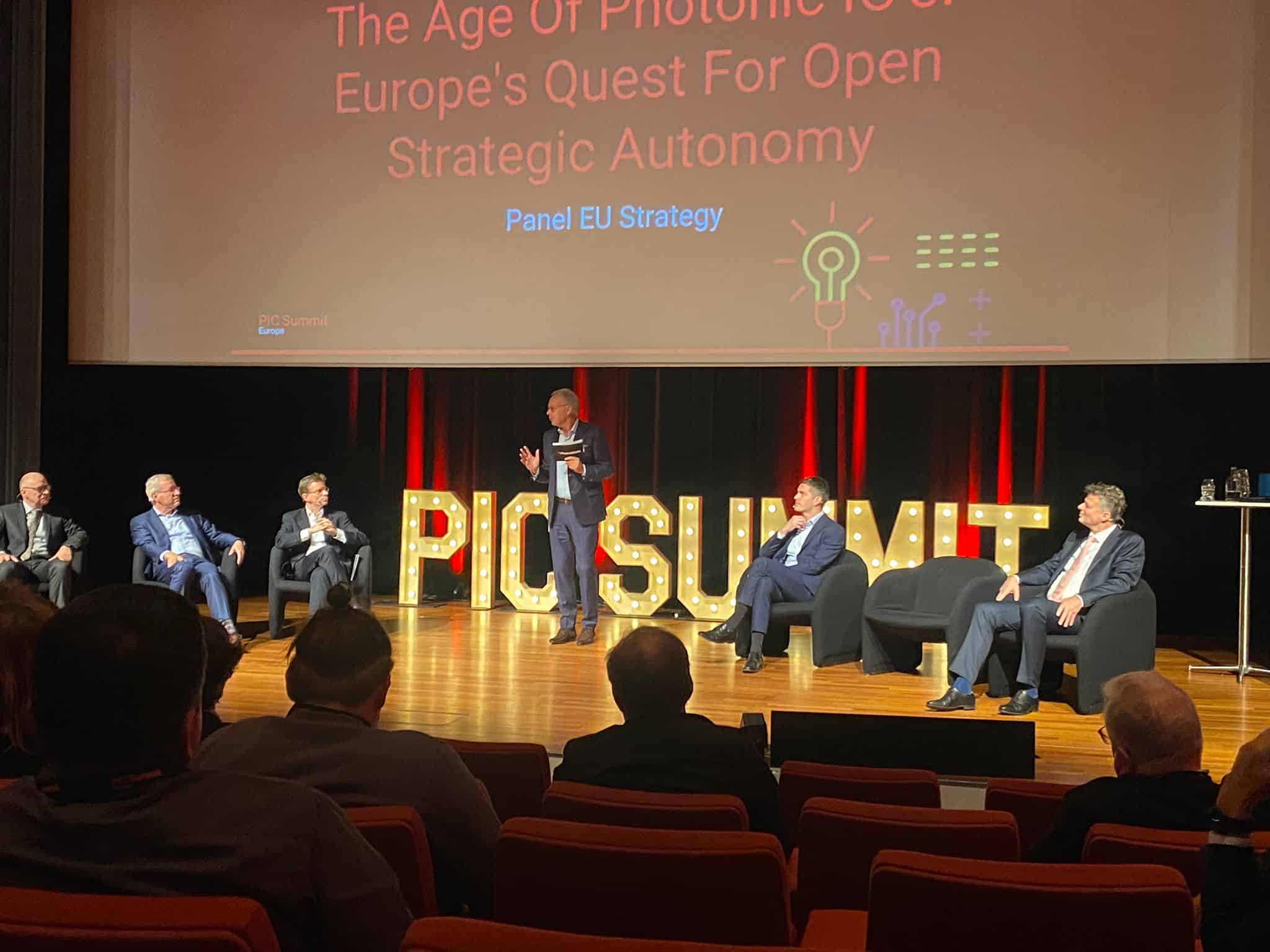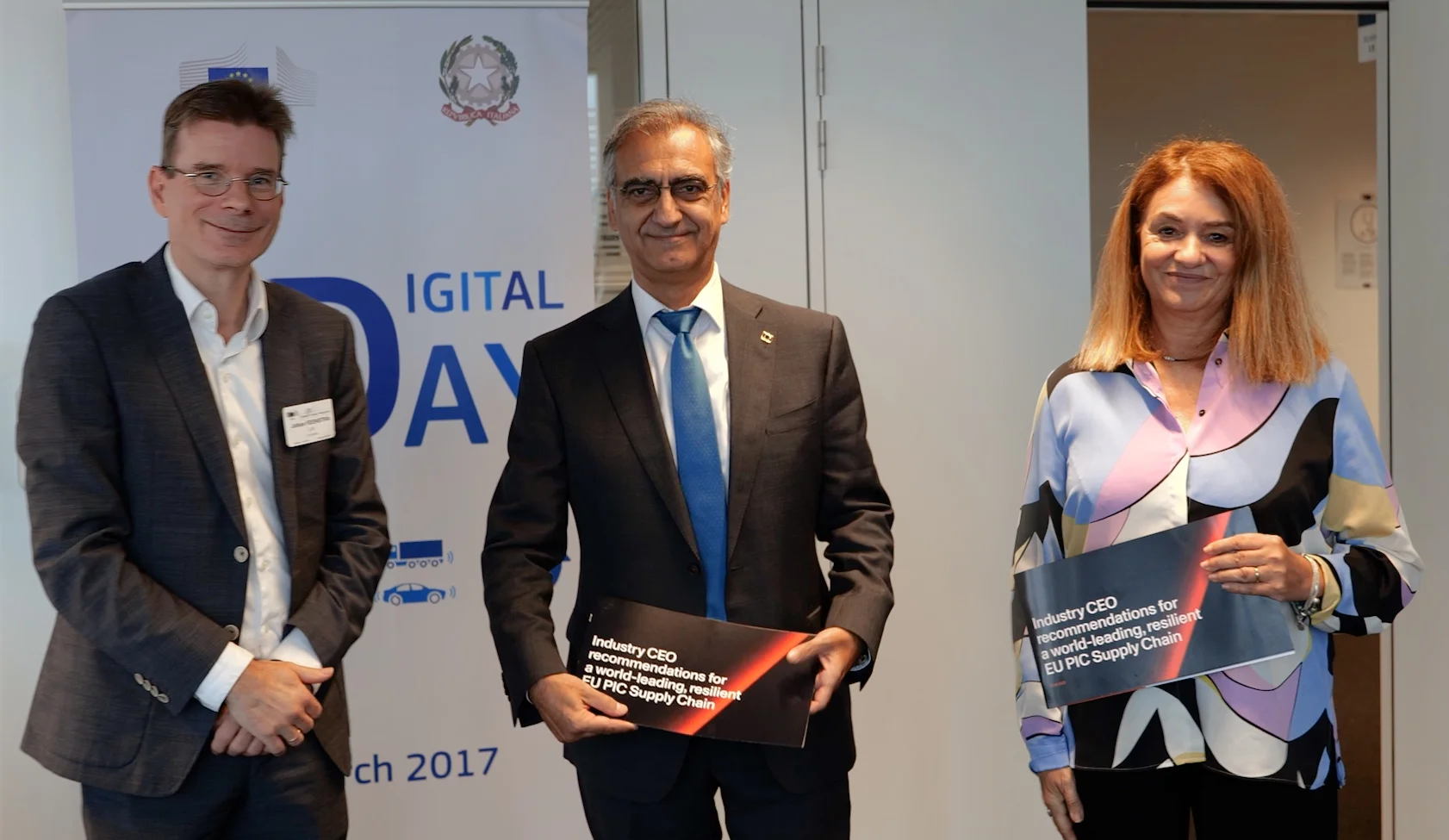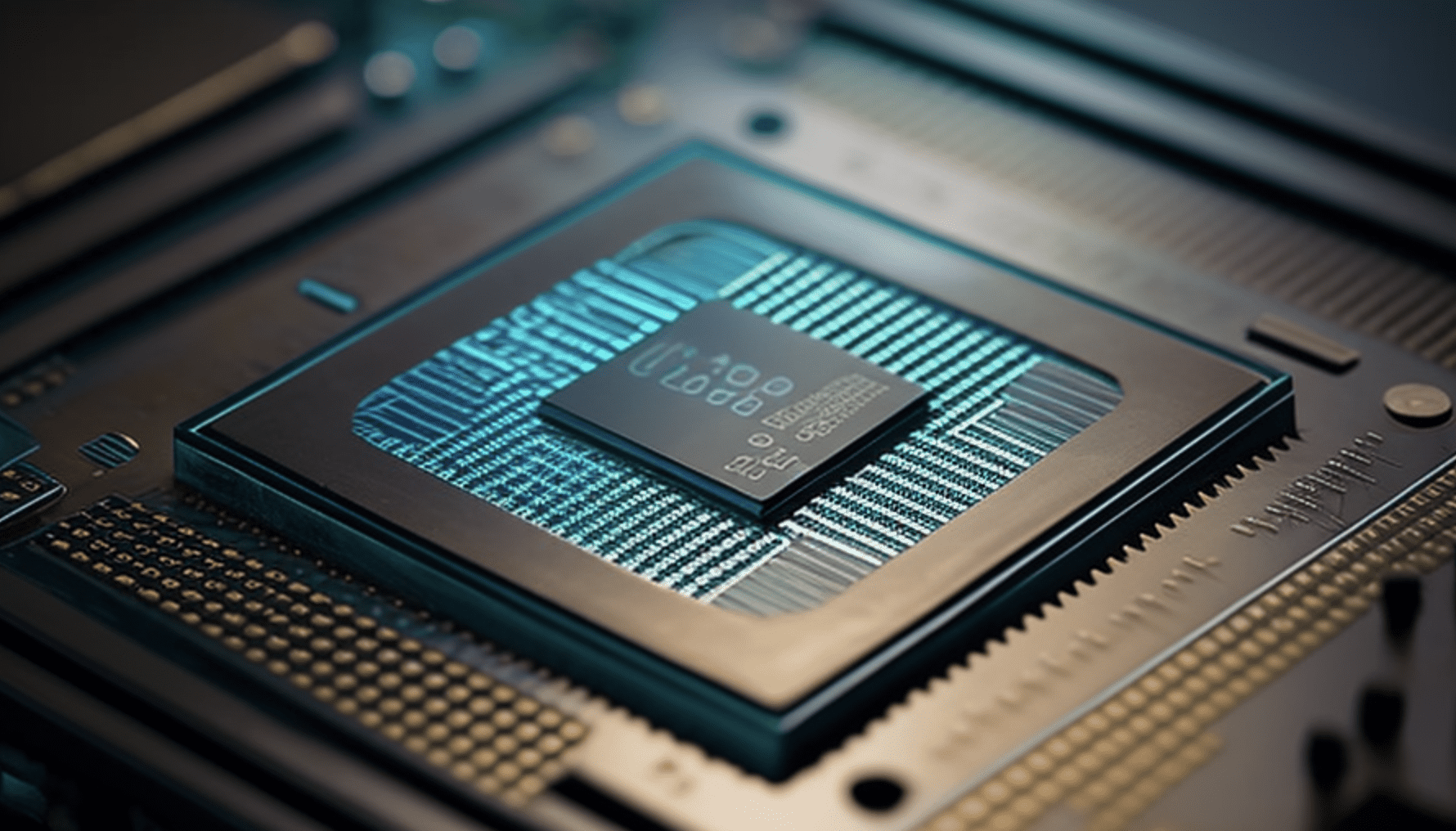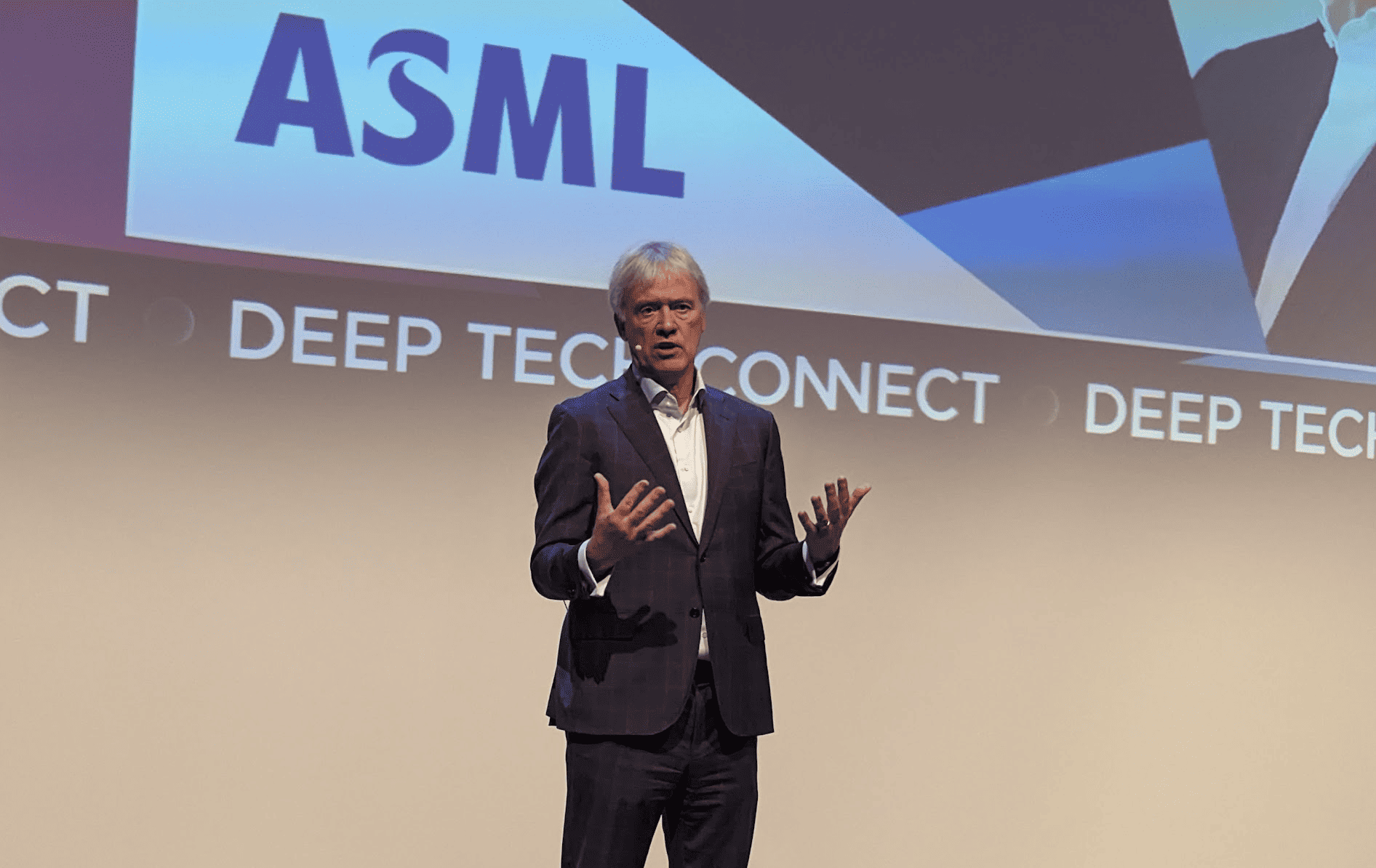
With the Chips Act, the EU aims to create incentives to increase the semiconductor production capacity, provide funds to stimulate technology leadership and take measures to make the chip supply chains more robust. The photonic chips industry is well aligned in the Act. But how feasible are these goals, knowing that competition in China and the U.S. is also gearing up?
In a panel discussion at the PIC Summit Europe, Erwin Nijsse (Dutch Ministry of Economic Affairs & Climate Policy), Tom Berendsen (European Parliament), Rudi de Winter (CEO of X-FAB), and Werner Steinhoegl (European Commission), reflected on the vision of a group of Photonics CEOs to create a world-leading, resilient PIC supply-chain. Johan Feenstra, CEO at Smart Photonics, was there as well, to offer more insights into the plans of the CEO group.
€4.25 billion
CEOs from eight of Europe’s largest integrated photonics companies have presented a plan to build a resilient European supply chain for photonic integrated circuits. The plan calls for €4.25 billion in funding over eight years and a range of recommendations to enable the European integrated photonics industry to become a global leader and have the ability to supply EU customers autonomously.

In his first response, shared by video, Thomas Skordas (European Commission) praised the CEOs for the right timing of the recommendations and for referring to the European Chips Act. “Our first aim is to make sure that the European semiconductor and photonics industry is getting the right support to be able to invest in Europe, creating the manufacturing facilities that we need in the future, doubling our production, and reducing our technological dependence on those parts of the world that may cause some problems for geostrategic and other reasons.”
Skordas invited the CEOs to work together with the Commission. “We have an ambitious industry that is ready to invest in photonics, one of the still emerging technologies for Europe where we have a lot of applications and a lot of strengths both in terms of knowledge and skills. We are ready to work further with the whole photonics sector system to achieve an ambition aligned with your vision and aims.”
Optimism
Werner Steinhoegl showed even more optimism when talking about the European ambition in photonics. “Of course”, he said, “the budget is never sufficient. But optimistic as I am, I can say the money will be found if the case is there. So, we are ready to play our role.”
Steinhoegl expects to have “a political window of opportunity”, now that Europe has decided to get less dependent on the rest of the world for their chips production. “We saw in the Corona crisis how important chips are. They are everywhere. They are in cars, they are in medical equipment, they are in critical infrastructure, they are in defense. That is why we went for this goal to build a value chain of at least 20% of global market share. Of course, that’s a political goal: 20% is the population or the market size of Europe compared to the world. Anyway, the idea is that we get less dependent, and this needs to be done at a European level.”
Too big for the Netherlands
With ASML in Veldhoven, the Netherlands is an important player in Europe, Steinhoegl said. “But it’s my duty to say that this is even too big for the Netherlands, it really makes sense to do it on a European level. That’s also why I am happy with the recommendations I received today. They say there is a trend for photonic chips, which is growing stronger than average in the semiconductor industry. This means there will be a market. Large companies are not only interested in this, they are doing it. We can further ignite this by joint activity, by cooperation. We can’t do anything without industry, without research. That’s exactly why the Commission, with the Member States and the European Parliament created, the framework conditions with the Chips Act. We are ready to play our role, also financially.”

Talking from a Dutch perspective, Erwin Nijsse was able to reassure mr. Steinhoegl that the Netherlands is looking at the photonic chips industry with a European vision. “We will organize ourselves with European countries to think not so much about what I would call silent competition but true collaboration, building on each other’s strengths, in new forms of collaboration so we can build European champions together.” Nijsse called the report “a start”, waiting for much more. “We should continue to move the ambition together. The Dutch government will cement that ambition in national goals, where, again, private and public collaboration will need to come together to realize this. As a matter of fact, I’m extremely optimistic that the European Commission can actually fund the initiatives.”
Center of gravity
Johan Feenstra, one of the initiators of the CEO recommendations, fully agreed with the other speakers about the necessity of collaboration. “Things are moving from having been vertically integrated for a long time into a horizontal value chain where people specialize. That is part of the opportunity that we have in Europe. We pull back manufacturing into Europe and with that, you create the center of gravity here in Europe, making use of all the R&D that we have done and been building on top of that. By that, you suck in the rest of the value chain as well. I think that’s part of what we wanted to do as a CEO group: we cover the whole value chain: Design is there, testing is there, packaging is there, manufacturing is there. It also covers the whole of Europe. I fully agree that while the Netherlands is very strong in integrated photonics, we cannot do this alone. We have to embrace our partners in Europe and build this whole value chain in the coming years.”

Political game
Although Tom Berendsen, a member of the European Parliament, praised the recommendations and the Commission’s response, he also expressed his concerns. “The interesting thing what you see happening is that the Chips Act is part of a bigger industry strategy in Europe. Industry politics was something that wasn’t on the table for many years. Now you see that governments want to actively engage in industries. That’s, of course, also a risky thing. If you do it, you need to do it right, and you need to do it consistently for a longer period.”
Ewit Roos, CEO at PhotonDelta, added another fear: “If there’s one thing I worry about, it’s the political process. We will start talking about what all the member states are doing and how we can divide the money to get some consensus. Like ‘if you support me, then I support you, and then I get money from you, and you help me’. It’s a political game. But do we have time to play this political game in Europe? How can we start investing in the areas where we excel, and potentially can become superior and have a position in the world? So that’s my fear – if we’re going to have that political route, we’ll never make it in the world.”
Werner Steinhoegl immediately tried to comfort Roos. “The idea is not to spread activities all over Europe. It’s about complementarity. In photonics chips, there are a couple of important platforms. We want to see that these are covered most effectively. So it’s about looking at the activities which are promising and then to see how can they work together, how do they complement each other, where the synergies are.”

